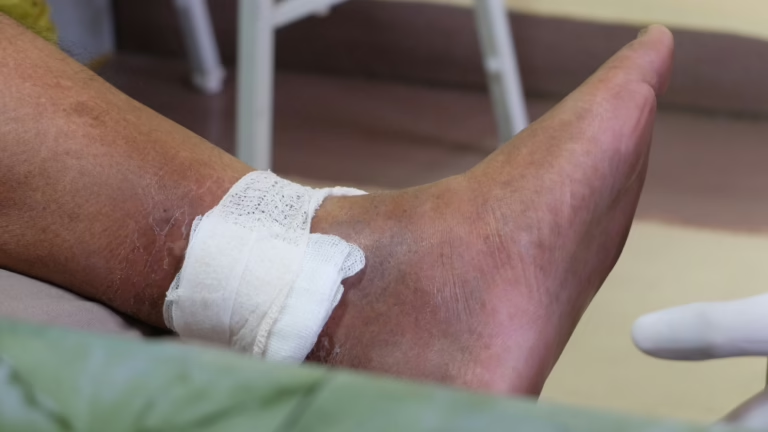When most of us think about vein health, we might assume it’s mostly a matter of age or genetics. While those factors do play a role, our daily habits, which include our weight management, posture, and activity level can play an equally important role in our circulatory wellness. While treatments such as sclerotherapy in Canton can be incredibly effective, staying proactive in regards to these key elements can help prevent the development of vein issues in the first place.
Whether you’re starting to notice visible veins or just want to stay ahead of future issues, understanding how your body mechanics influence circulation can help you establish a better foundation based around making smarter, healthier choices. Let’s dive into how these three key factors shape your circulatory vitality and what you can do to improve in each phase.
Weight: Why Your Veins Feel the Pressure
When we think about the risks associated with carrying extra weight, much of the concern centers around the excess burden placed on our joints and skeletal frame. While these apprehensions are completely warranted, the concern shouldn’t stop there. Carrying extra weight affects your circulatory system just as significantly as it puts substantial stress on your veins, especially in the legs. This is, in part, due to how lower-body veins work against gravity to return blood to your heart.
When you add excess weight, the vein walls and valves have to work even harder to keep blood flowing upward. Over time, this increased pressure can lead to venous insufficiency, where blood begins to pool in the veins, causing varicose veins, leg swelling, and that familiar heavy, achy feeling. It’s no doubt scary to think about, but fear not, there are a variety of ways to keep these threats at bay as we age. Let’s go through a few of them:
- Maintain a healthy weight: In most cases, the simplest answer is often the right one. Practicing habits to keep our weight at a manageable level is the best way to reduce unnecessary pressure on your veins.
- Aim for a balanced diet: A carefully managed eating regimen, rich in fiber and antioxidants, can do wonders to support circulation.
- Take part in simple exercises: Start slow with gentle movement. Every step counts when it comes to protecting your vascular health.
Posture: Rethinking These Unconscious Habits
We’ve spent a great deal of our lives sitting and standing, practically all of it. Through routine or unconscious habits, we more than likely have developed our fair share of subpar posture patterns. As we age, we tend to sit more than ever before, whether it’s at our desks, in the car, or on the couch. Poor sitting and standing posture can cause more than a bit of back pain. It can restrict blood flow and make it harder for your veins to do their job.
Crossing your legs, slouching, or sitting for hours at a time can compress the veins in your pelvis and legs, increasing your risk of spider veins, swelling, and blood clots. On the flip side, standing for long stretches, especially if you’re not moving, can cause blood to pool in your lower extremities. So, how can we avoid these posture pitfalls?
- If possible, avoid crossing your legs for long periods of time.
- Use a footrest or small stool to elevate your legs slightly while seated.
- If your job requires standing, shift your weight from leg to leg, and take short walks when possible to break the monotony.
- Consider compression socks if you’re on your feet a lot as they help support blood flow and reduce swelling.
Movement: The Original Circulation Booster
Although it may seem like it should go without saying, the best way to keep your blood flowing is to move regularly. Your veins rely on the muscles around them, especially your calves and thighs, to pump blood back to the heart. This is why walking is often referred to as a “natural vein pump.”
A sedentary lifestyle is one of the biggest contributors to venous problems. In fact, studies show that people who sit for long periods without movement are at higher risk for developing varicose veins and even blood clots like deep vein thrombosis (DVT). Here are a few ways to stay in motion at work or home:
- Try to take 5-minute walking breaks every hour, even if it’s just around your home or office. Though it seems like little work at all, this can go a long way toward keeping your veins happy.
- Do seated leg exercises like ankle rolls or heel lifts if you’re stuck at your desk. Making a habit of this can also aid in breaking up the creature comforts of bad posture habits.
- Consider low-impact activities like swimming, cycling, or yoga to keep your legs engaged and your veins supported.
Taking care of your vein health doesn’t require an extreme lifestyle change. It’s about making consistent, mindful choices that result in maintaining a healthy weight, practicing good posture, and staying active throughout the day. If you’re already experiencing signs of vein trouble, such as bulging veins, persistent swelling, leg cramps, or itching, don’t ignore them. These are often early signs of venous insufficiency, and getting the right treatment early, at a vein clinic in Enfield, CT, can prevent bigger issues down the road. At Vanishing Veins, Dr. Lori Greenwald and her staff specialize in treating varicose veins, spider veins and venous ulcers with care and attention to detail.
They will work to determine which treatment is right for you, whether it be sclerotherapy, microphlebectomy, or otherwise. These meticulous treatments, partnered with the aforementioned lifestyle changes, will have you leaving visions of painful, nagging veins behind. Contact us today to start your journey.



